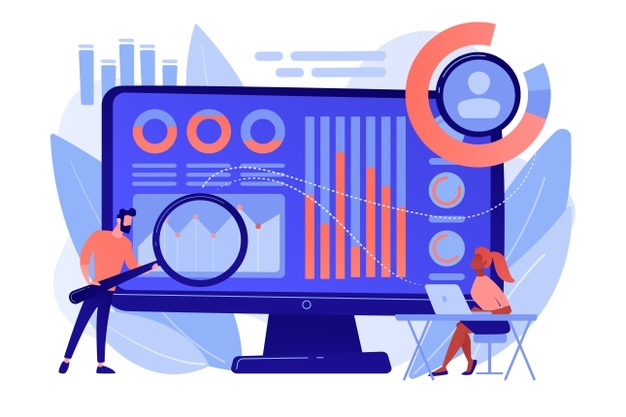
With businesses collecting huge volume of data and implementing AI technologies for insights, data governance too must shift gears to protect the organization from risks within and outside. This calls for a need to automate data governance. This blog post outlines the need for automation in Data Governance and the processes you can automate to strengthen your DG.
Data governance can be a daunting responsibility for most organizations that collect or deal with large volumes of data. With GDPR a reality of our times, specifying fines of €20 million or 4% of global turnover (whichever is lower), organizations cannot really afford to make mistakes anymore. A 2019 Norton report pegs the worldwide average cost of a data breach to a company at $3.86 Mn, and it’s almost double for a US company. Their very survival depends on the institutional protection of the data they hold, from risks within and without.
.tb_button {padding:1px;cursor:pointer;border-right: 1px solid #8b8b8b;border-left: 1px solid #FFF;border-bottom: 1px solid #fff;}.tb_button.hover {borer:2px outset #def; background-color: #f8f8f8 !important;}.ws_toolbar {z-index:100000} .ws_toolbar .ws_tb_btn {cursor:pointer;border:1px solid #555;padding:3px} .tb_highlight{background-color:yellow} .tb_hide {visibility:hidden} .ws_toolbar img {padding:2px;margin:0px}

One way of doing this, it goes without saying, is to have robust controls built into the use and access of data within the data governance policies and frameworks. This is perhaps the simplest form of data governance.
A slightly more complicated version of data governance exists as a much bigger, overarching practice that ensures data integrity in addition to data security. This meant that even data modeling and validation are defined within data governance policies, acting as both guide and ‘translator’ for interlinking systems.
With the rapid strides that have been made in artificial intelligence (AI) and machine learning (ML) of late, it is no wonder then that the paradigm has already shifted to the next stop on the evolution trail for data governance: automation.
.tb_button {padding:1px;cursor:pointer;border-right: 1px solid #8b8b8b;border-left: 1px solid #FFF;border-bottom: 1px solid #fff;}.tb_button.hover {borer:2px outset #def; background-color: #f8f8f8 !important;}.ws_toolbar {z-index:100000} .ws_toolbar .ws_tb_btn {cursor:pointer;border:1px solid #555;padding:3px} .tb_highlight{background-color:yellow} .tb_hide {visibility:hidden} .ws_toolbar img {padding:2px;margin:0px}
The need for automation in data governance
When it comes to man-machine systems, man is always the bottleneck for repetitive, quantified tasks. In fact, this is why robotic process automation (RPA) has become mainstream in recent years, automating tasks that involve neither creativity nor unpredictability but require focus and accuracy.
Organizations that have a higher share of human activity in their data governance tasks typically suffer from attrition and resource crunch as well. Attrition happens when people employed for repetitive jobs – such as beginner level data-entry, data validation or report-running – perceive it as a dead-end route for their career and switch to other positions with more potential. The subsequent resource crunch threatens not only the current system but also planned upgrades in the future. After all, if you don’t have the people, how are you going to build better systems?
It is here that automation in data governance can help: speed (for human beings have a fraction of the computing capacity of modern processors), scale (increasing the scope of work does not require expensive rehiring/upskilling) and uniformity in quality of output (unlike in the case of humans, where this is always unique and dependent on so many factors).
.tb_button {padding:1px;cursor:pointer;border-right: 1px solid #8b8b8b;border-left: 1px solid #FFF;border-bottom: 1px solid #fff;}.tb_button.hover {borer:2px outset #def; background-color: #f8f8f8 !important;}.ws_toolbar {z-index:100000} .ws_toolbar .ws_tb_btn {cursor:pointer;border:1px solid #555;padding:3px} .tb_highlight{background-color:yellow} .tb_hide {visibility:hidden} .ws_toolbar img {padding:2px;margin:0px}

.tb_button {padding:1px;cursor:pointer;border-right: 1px solid #8b8b8b;border-left: 1px solid #FFF;border-bottom: 1px solid #fff;}.tb_button.hover {borer:2px outset #def; background-color: #f8f8f8 !important;}.ws_toolbar {z-index:100000} .ws_toolbar .ws_tb_btn {cursor:pointer;border:1px solid #555;padding:3px} .tb_highlight{background-color:yellow} .tb_hide {visibility:hidden} .ws_toolbar img {padding:2px;margin:0px}
What can you automate in data governance?
1. Data entry
With tools such as optical character readers (OCRs) and computer vision, it is possible to automate data entry even from non-digital sources. Automating data entry frees you up from having to devote valuable human talent to such mundane, low-hanging tasks. It also eliminates the need to give more people access to sensitive areas of your data system, giving you more control and security in the long run.
2. Data Validation
Bad data is often worse than no data because it gives you a false sense of security. Organizations that depend upon humans to validate data and detect false entries still run the risk of letting things pass through undetected into the system – after all, there is no system of human vigilance that can ever claim to be accurate all the time. Besides, human failings such as prejudices and selfishness can come into play at any point of time, jeopardizing the organization itself. By automating the validation process at every critical node, you can then free up humans to focus on what’s really important: taking decisions on cases that the automated system doesn’t have a ready rubric for.
3. Reporting
Running regular reports and ensuring that the managers who need them receive them on time is a function that’s fast getting automated in organizations around the world. Collation, preparation and transmission is near-instant; confidentiality is guaranteed because the reports are seen only by those for whom they are intended, instead of a succession of manual compilers and couriers in between. Automation reduces the dependency on the availability of divided human resources as well, which means you will be able to guarantee your managers 100% SLA compliance.
4. Interlinking
Despite all the advances made over the years in coding, APIs and standardization, interlinking two applications still remains one of the most likely sources of vulnerability for both. Even if you might have already reduced the chances of inter-departmental variation in data formats with a robust data governance framework, automating such processes ensures that you have reduced any residual risk that might exist as well. It also means that data can pass from one system or vertical to another without being bottle-necked by human oversight.
With machine learning and mobility technologies advancing at a faster pace than ever in the history of information technology, it is certain that automation in data governance is here to stay. It is only a question of when – and not if – organizations choose to make it a part of their own DG frameworks.
.tb_button {padding:1px;cursor:pointer;border-right: 1px solid #8b8b8b;border-left: 1px solid #FFF;border-bottom: 1px solid #fff;}.tb_button.hover {borer:2px outset #def; background-color: #f8f8f8 !important;}.ws_toolbar {z-index:100000} .ws_toolbar .ws_tb_btn {cursor:pointer;border:1px solid #555;padding:3px} .tb_highlight{background-color:yellow} .tb_hide {visibility:hidden} .ws_toolbar img {padding:2px;margin:0px}
.tb_button {padding:1px;cursor:pointer;border-right: 1px solid #8b8b8b;border-left: 1px solid #FFF;border-bottom: 1px solid #fff;}.tb_button.hover {borer:2px outset #def; background-color: #f8f8f8 !important;}.ws_toolbar {z-index:100000} .ws_toolbar .ws_tb_btn {cursor:pointer;border:1px solid #555;padding:3px} .tb_highlight{background-color:yellow} .tb_hide {visibility:hidden} .ws_toolbar img {padding:2px;margin:0px}
At I&I Software, find skilled IT professionals to perfectly suit your needs.
.tb_button {padding:1px;cursor:pointer;border-right: 1px solid #8b8b8b;border-left: 1px solid #FFF;border-bottom: 1px solid #fff;}.tb_button.hover {borer:2px outset #def; background-color: #f8f8f8 !important;}.ws_toolbar {z-index:100000} .ws_toolbar .ws_tb_btn {cursor:pointer;border:1px solid #555;padding:3px} .tb_highlight{background-color:yellow} .tb_hide {visibility:hidden} .ws_toolbar img {padding:2px;margin:0px}


